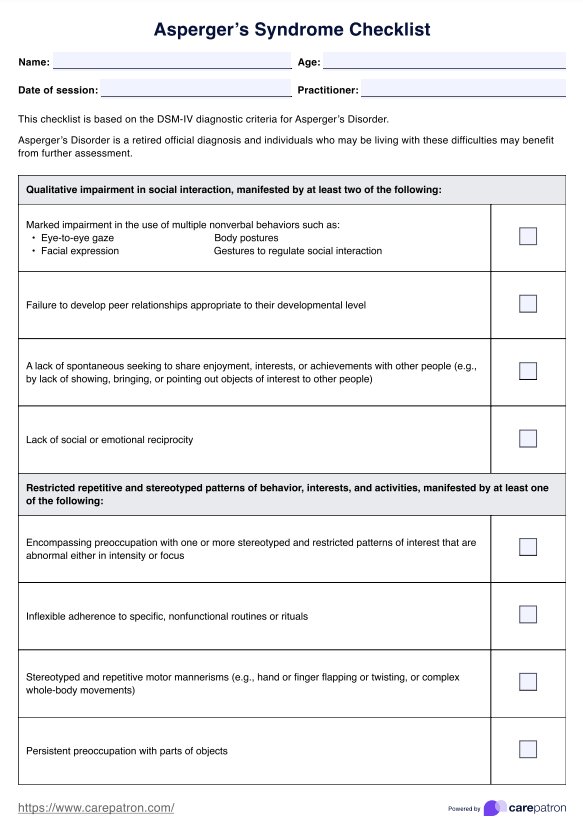No. It can only be managed. If it's detected early (during childhood), professionals can plan interventions and therapy plans and provide support services to the child to help them manage the syndrome and develop coping strategies. This gives them a better chance of living typically without the syndrome becoming a significant hindrance.

Asperger Traits Checklist
Learn about Asperger’s syndrome and download our Asperger Traits Checklist to assess patients suspected of having the syndrome.
Asperger Traits Checklist Template
Commonly asked questions
Currently, the cause of Asperger's syndrome is unknown. Scientists believe that genetics and brain abnormalities are contributing factors, but they're not fully proven.
No. Asperger's syndrome is now part of autism spectrum disorder. Some people will have traits that others won't necessarily have. There will be similarities, of course, but each person is different. Some people with Asperger's might be better at communicating than others. Some might not have hypersensitivity to noise or light compared to others.
EHR and practice management software
Get started for free
*No credit card required
Free
$0/usd
Unlimited clients
Telehealth
1GB of storage
Client portal text
Automated billing and online payments











